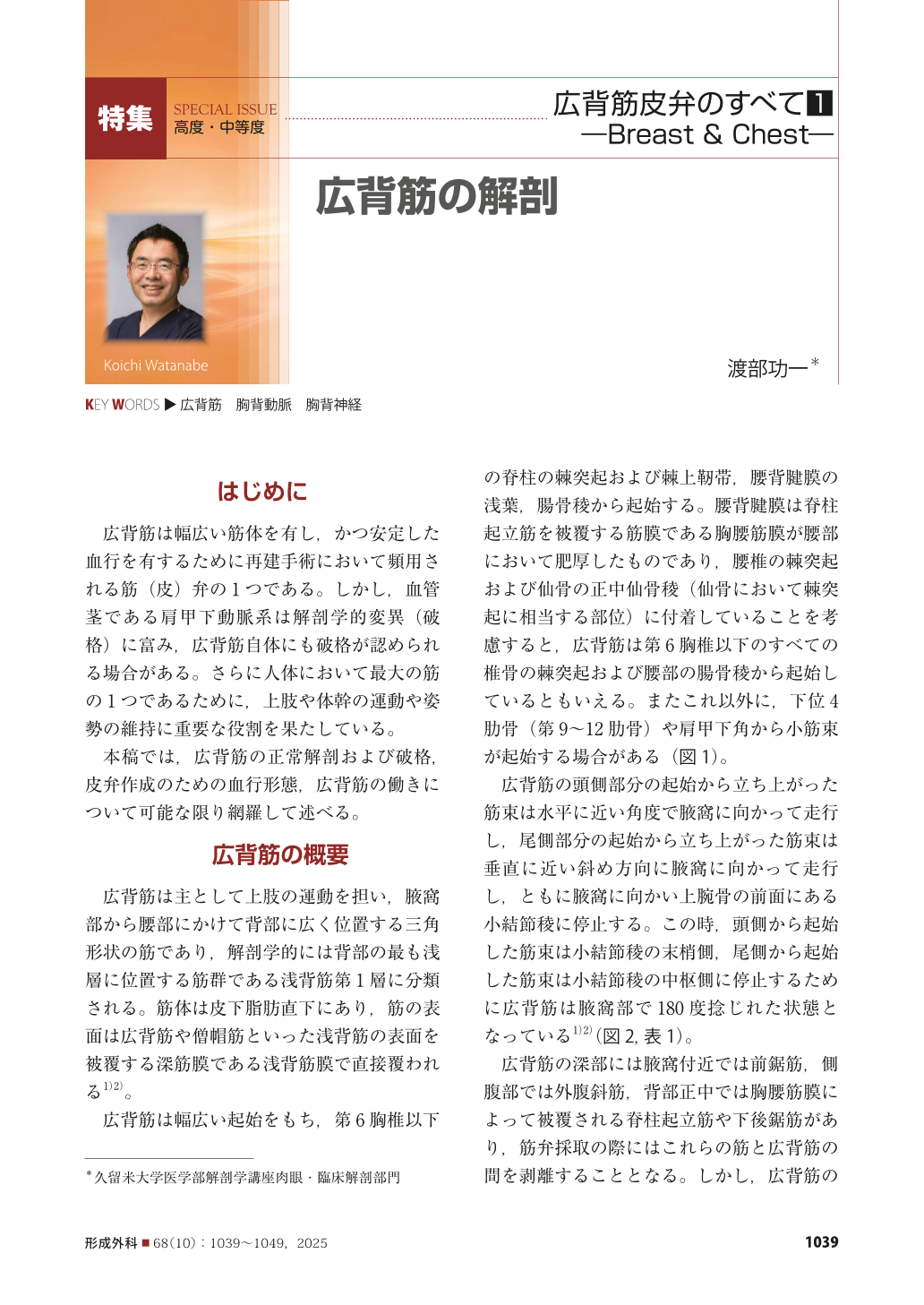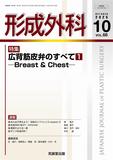Japanese
English
- 有料閲覧
- Abstract 文献概要
- 1ページ目 Look Inside
- 参考文献 Reference
はじめに
広背筋は幅広い筋体を有し,かつ安定した血行を有するために再建手術において頻用される筋(皮)弁の1つである。しかし,血管茎である肩甲下動脈系は解剖学的変異(破格)に富み,広背筋自体にも破格が認められる場合がある。さらに人体において最大の筋の1つであるために,上肢や体幹の運動や姿勢の維持に重要な役割を果たしている。
本稿では,広背筋の正常解剖および破格,皮弁作成のための血行形態,広背筋の働きについて可能な限り網羅して述べる。
The latissimus dorsi is one of the most frequently used sources for a myocutaneous flap in reconstructive surgery because of its broad muscle belly and stable blood circulation. The latissimus dorsi muscle flap is categorized as type 5 in Mathes and Nahaiʼs classification. It is composed of the main nutrient vessel, the thoracodorsal artery, and the secondary and smaller nutrient vessels, the perforators of the ninth intercostal artery through the second lumbar artery. The blood circulation morphology differs between the latissimus dorsi and the dorsal skin, as the latissimus dorsi muscle is composed of three vascular territories and the overlying dorsal skin is composed of two vascular territories. When elevating a myocutaneous flap, it is necessary to be familiar with the blood circulation morphologies of the latissimus dorsi muscle and the dorsal skin.
In addition, the vascular pedicle, the subscapular artery system, is rich in anatomical variations and also in the latissimus dorsi muscle itself. As one of the largest muscles in the human body, the latissimus dorsi plays important roles in the movements of the upper limbs and trunk and postural maintenance. It is therefore necessary to be familiar with the functions of the latissimus dorsi muscle and to minimize functional impairments due to its deficiency.

Copyright© 2025 KOKUSEIDO CO., LTD. All Rights Reserved.


